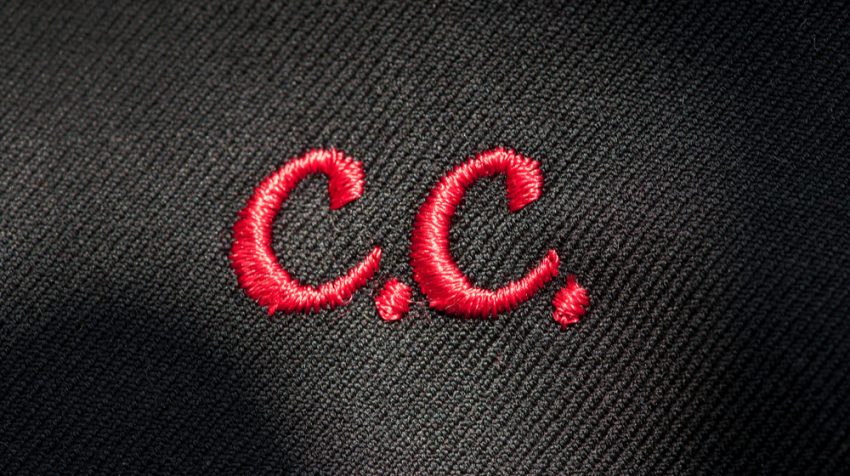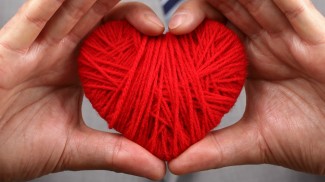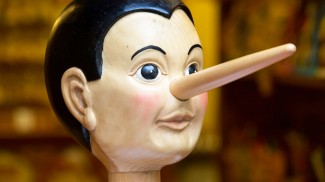Handmade businesses have taken off in recent years, in part because those businesses offer plenty of opportunities for consumers to customize products to their exact specifications. One of the most traditional methods for customizing products is monogramming. A monogramming business can sell products that have people’s initials embroidered on them or even add monograms to items that people already own.
Starting a Monogram Business
If you’re interested in starting this type of business, here are some essential steps.
Invest in a Sewing Machine with Embroidery
Unless you plan on manually embroidering every monogram, which probably wouldn’t be a very profitable decision, you’ll need a machine that is able to do some of the work for you. Many sewing machines have an embroidery function, but not all.
Kristina Pearson of the blog She Loves to Sew explains, “If you’re looking for a high quality embroidery machine, then the first thing you’ll need is a machine that offers automatic thread tension and autopilot functions. Only the most skilled sewers can manually control all of the aspects of embroidery while maintaining manual control and even they like to take a break every now and then! Look for a machine that has a good reputation for providing consistent tension and consistent speeds.”
Improve Your Skills
If you’ve embroidered already as a hobby, you’re off to a great start. But running a monogram business requires you to turn out product on a quick and consistent basis. So it’s a good idea to practice, practice, practice so you can work at a good pace once you’re actually making money to monogram.
Choose a Niche
There are so many different products you can monogram — t-shirts, bags, towels, handkerchiefs, jackets, sheets and basically any other fabric item you can think of. If you only want to work with a specific type of item, then come up with a product or service list that fits with that. You’ll also need to determine whether you want to monogram items that people already own or make your own products that people can then customize with their initials.
Read Up on Monogram Etiquette
Monograms have been used since ancient Greek and Roman times. As such, there’s a lot of etiquette surrounding it. For instance, single letter monograms usually showcase a person’s last initial. The monograms for single and married people are different. And monograms for men and women tend to use different style fonts. This guide from Debbie Henry on the Craftsy blog offers a thorough explanation of many of the “rules.” But while it’s a good idea for you to be aware of these traditions, you can also work with your clients to create more unique customization options if you so choose.
Henry adds, “Also note that although these are the more “traditional monogram rules,” there are no right and wrong ways to create monograms. Most of the time, it depends on the person receiving the gift. Focus on fitting the design to their personality, and you won’t go wrong!”
Stock Up on Supplies
Aside from the embroidery machine, you’ll also need to stock up on some complementary items to run your business, including thread in various colors, products if you plan on selling your own items and potentially a design software program. Many machines come with their own software programs that you can use and sync to the machine. But if not, you’ll need to invest in one in order to automate part of the process.
Create a Pricing Structure
As with any handmade business, it’s important that you create a pricing structure that takes both your time and investment into account. Especially with custom products, you’ll need to come up with a formula that’s easy to work with so you can keep your pricing consistent but still pay yourself enough for each job. It’s also important that you take ALL costs into account, not just the main products or supplies you use for each product.
Nicole Stevenson, blogger and consultant behind Dear Handmade Life writes, “Makers often overlook hidden costs when determining what they pay for materials. Using shirts as our product example, you can’t just say a shirt costs you $5 to buy so your materials cost $5. You have to consider EVERYTHING you need to make that shirt, like screen printing ink, screen printing screens, care label, your label, hangtag, thread to sew labels, etc. There may be other hidden costs for your product as well. Examine every item you use to make the finished product and don’t leave ANYTHING out! Don’t fall prey to the notion that you only use a tiny bit of thread for each shirt and not add thread to the materials list. Don’t fail to add in shipping costs of getting the shirts to you, or your time, gas and mileage to pick up materials. It all adds up!”
Share Your Process and Policies
In order to actually work with customers, you’ll need to share with them what it looks like to work with you. If you sell your own products and simply allow customers to customize each one with their initials, then you could just include a form or drop-down menu on your website and create shipping and turnaround times as any ecommerce site would. If you customize products that people already own, then you need to explain to people whether they should bring items to your location, mail them to you or go about it in some other way. Then you’ll need policies that describe how long the process takes, what happens if items are misplaced and how items are returned to customers.
Market to Your Target Customers
Of course, you have to also reach those customers before you can work with them. So as you narrow down your services and specialties, you’ll need to think about the types of people who are likely to use your services. You could target professionals and businesses that want shirts or bags customized, you could work with large groups like school clubs or sports teams, or you could target individuals who are simply looking for personalized gifts. Once you figure out your target audience, you can create online ad campaigns or put up signs in your local community in places where those specific customers are likely to see.
Photo via Shutterstock








Aira Bongco
And it is not just about monograms. There seems to be a good market for personalized items nowadays.
You can extend this to other goods as well. It is like the calligraphy business that have grown so much.
It seems that there is now more value in personalized and artistic products which makes this business more profitable.
Alex
Yes you are right. The trend is on!!!
Alex
Great article. I am thinking to start a monogram business soon.
Which type of sewing machine should I use for this project?
Stephonia Taylor McLinn
Would a Singer 6700 machine be good as a start¿
I just want to tell you that I’m newbie to blogging and certainly enjoyed this web page. More than likely I’m likely to bookmark your website . You definitely have good writings. Kudos for revealing your web-site.
I made this last night, and it was wonderful! I added sauteed onions and mushrooms. My boyfriend loved it.